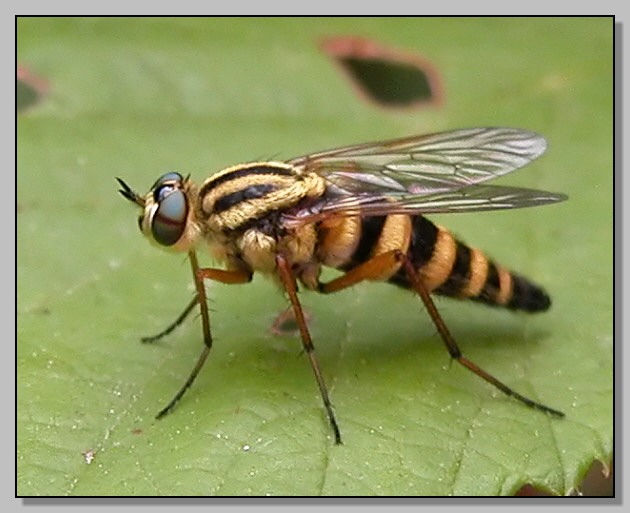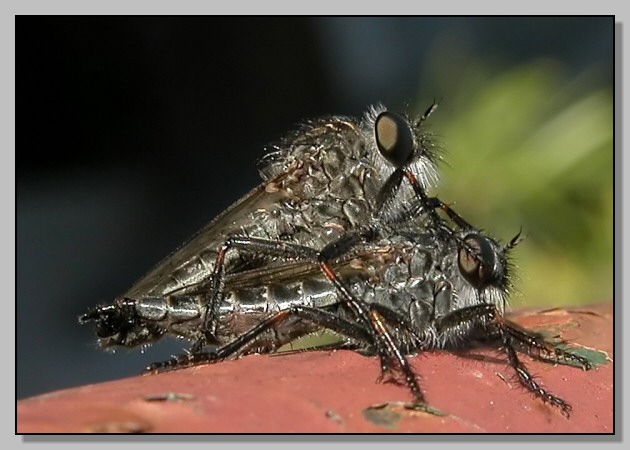Thread subject: Diptera.info :: Striped Asilidae (?) from Rome, Italy
Posted by lynkos on 10-07-2005 05:41
#1
I'd like to submit for your attention this delightful Diptera I photographed yesterday. I think it is an Asilidae, but it seems less hairy than usual and I've never seen one with such bright colours. Can anyone help? Thanks :), Sarah

Posted by lynkos on 10-07-2005 05:43
#2
While I'm on the subject of Asilidae, here's another I took in June of an amorous couple on my terrace. Can anyone give them a name? Thanks again, :), Sarah

Edited by lynkos on 10-07-2005 05:43
Posted by Jan Willem on 10-07-2005 09:40
#3
The first foto looks like a beautifull member of the family Therevidae to me. The flies on the second foto indeed are Asilidae.
Jan Willem
Posted by lynkos on 10-07-2005 10:12
#4
Thanks again Jan. It really is one of the most beautiful Diptera I've come across. Some more research for me to do, Sarah
Posted by Ben Hamers on 10-07-2005 16:23
#5
The Therevidae sp. looks a lot like Thereva aurata in "Fliegen und M?cken" ( J & H Haupt ). But they write too that there are other, similar specimen.
Ben
Posted by lynkos on 10-07-2005 20:03
#6
Thanks Ben. I tried to find a picture in Internet, but unfortunately there doesn't seem to be one. Thereva aurata doesn't seem to be listed for my area of Italy, so it could be one of the others listed. Do you know which they might be so I can check them out? Sarah
Posted by Ben Hamers on 10-07-2005 22:21
#7
Sarah,
The other Thereva sp. are not listed in the book. It says however, that the colouring of the others is less remarkable. Thereva aurata should be widely spread in Southern Europe and parts of Asia.
Ben
Posted by lynkos on 11-07-2005 05:10
#8
Thanks Ben :). In the official checklist of Italian fauna, it lists aurata as occurring in the north of Italy, whereas my area is usually classified as the south, or at most centre. But obviously the line is not a Berlin wall and it is quite possible a specimen could have strayed so far south! Sarah

